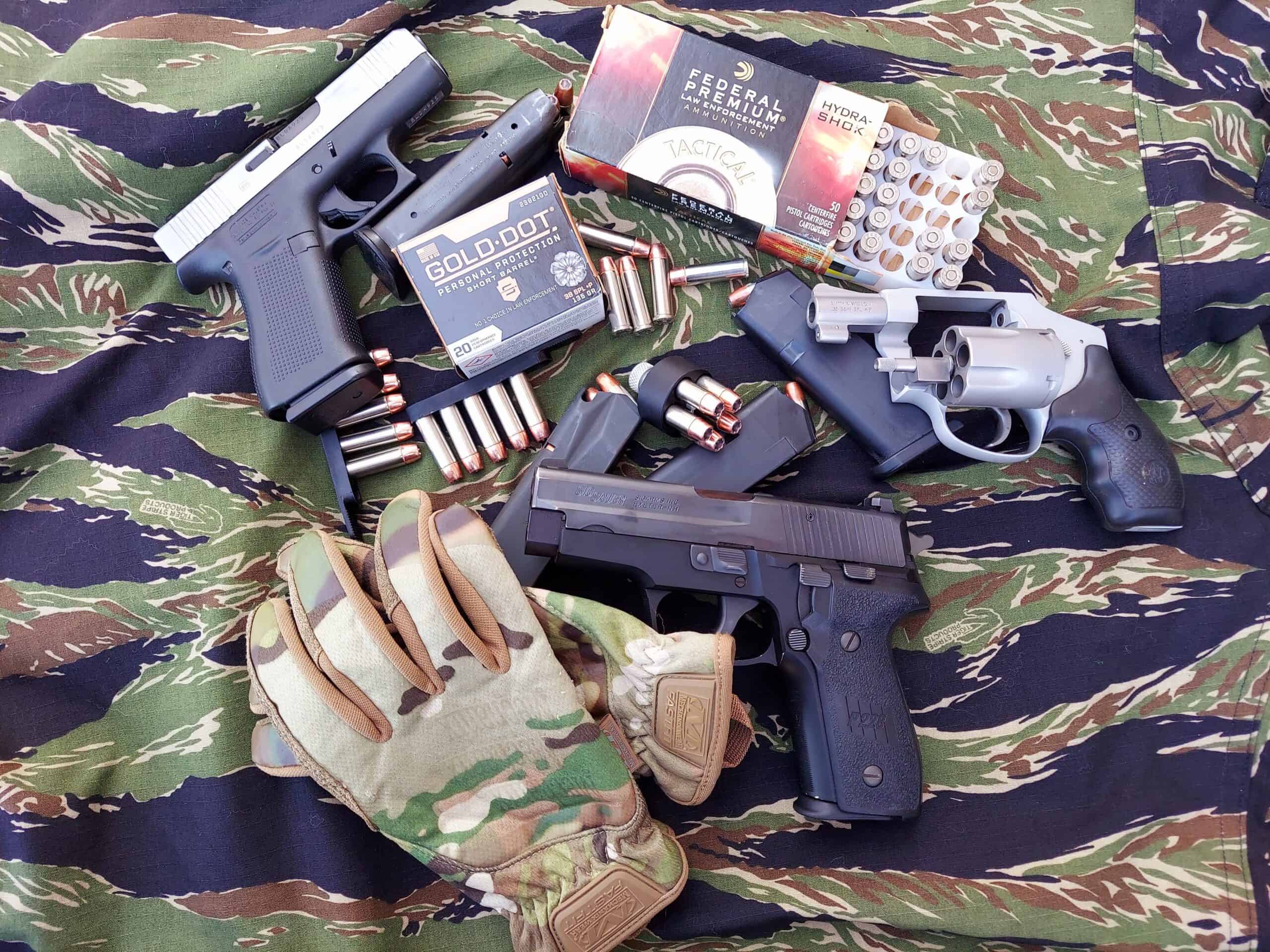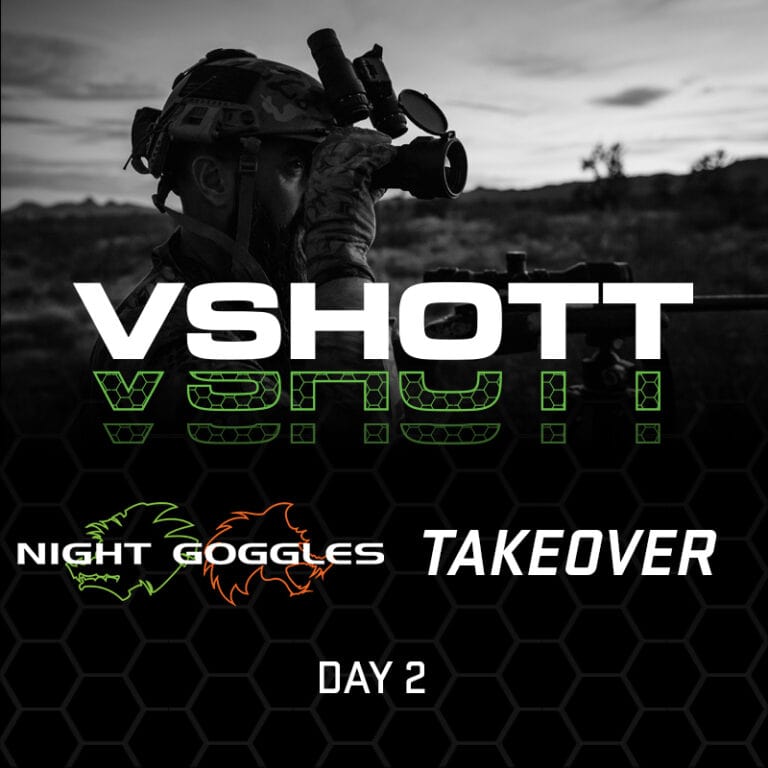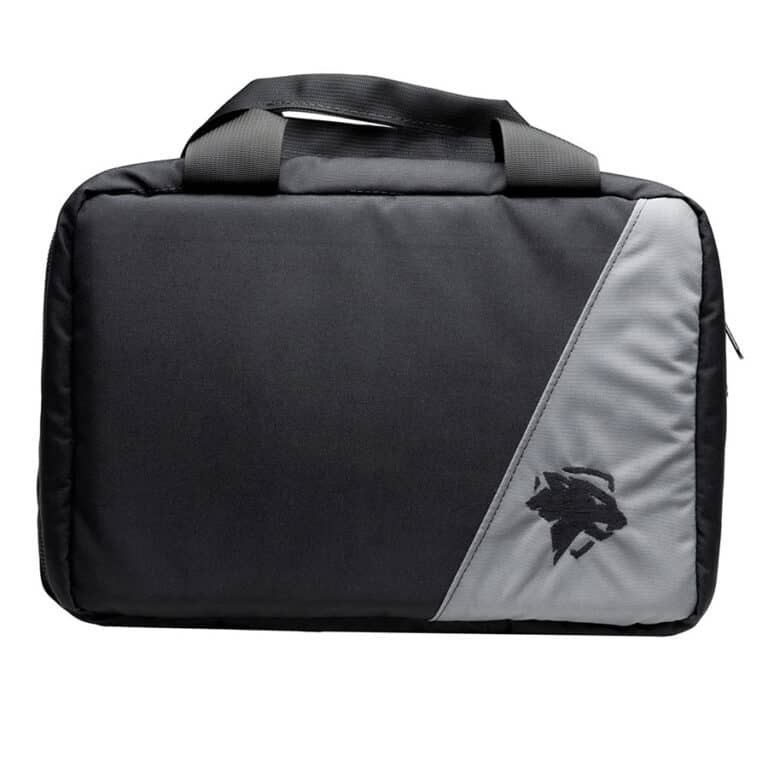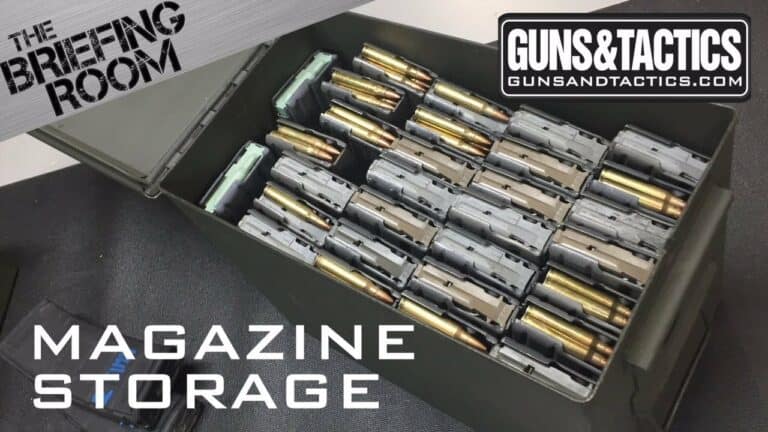TAG Precision—American-made RMR Plate for Kimber
For users of optics-ready Kimber 1911 and 2K11 pistols, TAG Precision has announced…
For users of optics-ready Kimber 1911 and 2K11 pistols, TAG Precision has announced…
Fountain Valley, CA—SureFire, LLC, manufacturer of the world’s finest—and most innovative—illumination tools and…
Shinenyx—creators of a cutting-edge fusion of digital night vision and thermal imaging technology—has…
All shooting is a balance between speed and precision. By that I mean you can…
The Mod-Navy Qual I’ve been doing this qual (or drill, or whatever the current nom…
• Built for road trips and off-road use• Manual transmission equipped• Wrapped in MultiCam Arctic…

The Revolvers versus Semi-Autos argument has raged on since the 1970s, and maybe even a bit before that. Ever since semi-auto handguns have been produced by manufacturers and have been available to civilians and law enforcement, people have debated, even fought, about which platform is “better” and has more to offer the shooter.

So many shooters today go out and purchase a firearm without first asking the question, “What do I want to do or accomplish with the firearm I’m buying?” Instead, many simply say, “I need a gun.” And in today’s world, is it any surprise that more and more people are purchasing firearms for the first time? I think not. Yesterday on the radio, I heard that my state had a record quarter in firearms sales (as this is written, we are in April, the first quarter of the year, in 2021). The pandemic has been the object of obsession for just over a year, and firearms sales are still not abating; instead, they are increasing!
Most people cite Protection/Defense as a reason for gun ownership, which makes quite a bit of sense. They’ve seen how easily store shelves can be picked clean and how civil unrest can spiral out of control in just hours. One would have to be living in a cave at the bottom of the ocean not to see the handwriting on the wall.
Now many of us have been “into” guns for years. Maybe decades. I began shooting when I was five years old. So many of my friends are in the same boat. That said, there are so many shooters out there who have never even held a firearm and now find themselves in possession of one, sitting there staring at their shiny, new blaster, wondering: “What do I do now?” I tell them to get training and get it fast!
Perhaps I’m getting a bit ahead of myself at this point, though. Let’s harken back to the age of dinosaurs. I was a brand new, fresh-out-of-the-box corrections officer in the year of our Lord, 1990. The earth was still cooling, and I was going through the top-notch basic training that the Department of Corrections (DOC) gave its employees (is your Sarcasm Detector turned on?).
The DOC placed a S&W Model 10 .38 Special revolver in my hands to train with because that was the handgun that they issued officers back in the day. As an aside, they now issue S&W .357 Magnum revolvers, although they only allow .38 Special ammunition to be issued (yes, even today, in 2021, they still issue revolvers). They may be one of the only law enforcement agencies to still issue revolvers in this day and age. On the one hand, my response is that this situation is that it’s absolutely pathetic, that they need to get with the times and upgrade to semi-automatic pistols! But, on the other hand…is it so bad?

I went through basic training with no problem, and for years, I trained with those revolvers. When I was on CERT (Corrections Emergency Response Team), we would enter state competitions. Our training wasn’t shooting boxes of ammo for the handgun event, instead, I’d fill five-gallon buckets full of ammunition to bring to the firing line, and we would go through several of those per day. I shot so much that I had to wrap my trigger finger because it bled. The result was that we could operate those revolvers in our sleep and hit tiny targets very quickly. Reloading using speed loaders was second nature, and still is.
The bottom line is that training can give you confidence in equipment that you’re not thrilled to be using. Today, I have plenty of confidence in my abilities with a revolver, and people who say a revolver cannot be reloaded quickly stand with their mouth agape when they’re shown how quickly one can be reloaded.
A shooter doesn’t need to be at the range to practice reloading drills. Some Snap Caps and a few speed loaders are all that’s required to do it at home. If using an auto, a few empty magazines, and snap caps get the job done. Just be sure to have ABSOLUTELY NO LIVE AMMUNITION in the same room you are practicing in, including none on your person!
I’ve already gone off on a tangent; that didn’t take long. It sounds like I’m biased toward revolvers, doesn’t it? Well, that would be incorrect. I like autos, and I cannot lie! Why? Semi-automatic pistols are usually thinner than revolvers, and their trigger pull is often lighter.

Semi-autos typically hold more bullets, but it depends on what we’re using. The trend in recent years with semis has been drastically reduced size, which sometimes means reduced capacity. The Glock 43 (six rounds) and Sig P238 and P938 are examples that spring to mind. Other small autos (Glock 26, Sig P365, and Springfield Armory Hellcat, to name a few) manage to cram a ridiculous amount of rounds into a platform that, at first glance, shouldn’t be able to hold that many rounds. Modern engineering is pretty amazing!
These days, many defensive, concealable revolvers, such as the S&W Model 642 that I just picked up, hold five rounds. Is five rounds enough?

I’ve heard many people say, “If I can’t get it done with five rounds (or six), then I can’t get it done.” Well… I don’t necessarily agree, and here’s why. People (or large animals that are attacking) don’t always know that they are supposed to fall down and die in a loud, grotesque manner when they are shot.
In fact, some of them continue attacking after being shot a few times. There are countless videos online of people absorbing many rounds and continuing to attack. I have also personally met and talked with many people who have absorbed many bullets and are still with us.
A good friend, who was a former cop, was involved in a shooting while on duty. The bad person, who was pointing a gun at officers, was engaged by the police, absorbed a ridiculous amount of bullets from pistols, and was so impressed that he continued his attack. It took four rounds of 12 gauge 00 buckshot from my friend’s shotgun before the attacker’s birth certificate expired. Is this a typical example? Not at all. However, it’s something to consider.
People are affected by adrenaline, drugs, and other factors that can make stopping them a downright difficult job. And that is a factor.
Now, let’s expand a bit and realize that criminals frequently operate in pairs or groups. Let’s say you’re facing two bad guys who are hopped up on adrenaline and who knows what other substances. Is five rounds enough?
It may not even be enough to take down one of them, let alone both. So we have to ask ourselves how likely this scenario is to unfold in our lives, coupled with the knowledge that Mr. Murphy, of Murphy’s Law fame, enjoys making appearances and raining on our parade. Just something to keep in mind.
I’ve never heard a shooting or gun battle survivor say, “I really wish I’d brought less ammo.” This is just some food for thought (which is the entire point of this article to get the reader thinking).
Generally, ammo capacity goes to semi-autos, hands down. They win that category, sometimes by a thin margin, other times by quite a bit.
Semi-autos have to have the slide racked by the shooter in order to chamber a round. For some shooters, this is no problem. However, other shooters, who might be advanced in age, might not have the hand strength or might have arthritis, which makes it difficult or impossible to cycle that slide.
People of smaller stature may also sometimes not have the hand strength to rack the slide. Auto pistol manufacturers recognize this, and a few have come out with pistols that have less spring strength, making the slide a bit easier to rack. But, despite that, some shooters still can’t manage it.
I know one popular gun writer who was in a large city police department who carried a .40 caliber auto for many years, and he was quite pleased with the performance. During his career, he saw a vast amount of violence because of the nature of the city where he worked. He now carries at least two revolvers on his person, and his wife is armed with a revolver.
Why? Because she does not have the strength to rack that slide (they’re both up in years). To accommodate her, they now use revolvers, and they feel pretty well-armed. I forgot to mention that he began his career using revolvers, so it wasn’t a huge jump for him to return to the wheel gun. This guy has so much experience that, when he talks, I pay attention.
Accidental Discharges (ADs) occur more often with semi-autos because it’s difficult to see if there’s a bullet in the chamber, and people sometimes break the rule and don’t check. With a revolver, it’s easier to see if it’s loaded. So, no, there’s never an excuse to have an AD, but it is what it is; stuff happens.
Revolvers have no slide to operate, so a person with less hand strength may find the revolver advantageous in that department. A point goes to revolvers in that category.
In this department, revolvers win, hands down. The Magnum calibers have “Special” rounds that can be fired. Examples are the .357 Magnum being able to fire the .38 Special, which recoils less and costs less to shoot. Likewise, the .44 Magnum can fire the .44 Special round, which naturally recoils far less and is rather pleasant to shoot while still putting a substantial chunk of lead downrange.
People can handload ammo with very low velocities and recoil for their revolvers or tailor it any way they want it. Unlike the semi-auto, there’s no recoil system to satisfy., no slide to operate. People who use revolvers for hunting really can take advantage of the versatility that revolvers offer in this department. Again, point to the revolver side of the argument.
Many stoppages (they are not “jams”; we put jam on our toast) with semi-autos can be traced to the magazine (whether we’re discussing rifles or pistols). That’s one reason why we advocate for carrying at least one spare magazine when you carry a semi-auto. I usually have two spares.
In the early years, semi-autos were stereotyped as being prone to have stoppages, and that was a feather in the cap of those who supported not switching over to semis from revolvers. They claimed that the streets would be littered with dead cops whose pistols had “jammed.” And in those early years, they had somewhat of a point, as semis were just becoming a thing on the market.
Fortunately, these days, semi-auto reliability has advanced light-years. It’s relatively rare to have a semi that won’t feed well, although it happens occasionally. Anything with moving parts can fail, even your precious (insert beloved favored pistol name here).
Conversely, we all know that revolvers never fail to fire. Right? Well, not so fast. They can still have issues as well. Broken firing pins, cylinders that are out of timing, and other maladies can still strike a revolver.
However, revolvers have far fewer issues in the reliability department than autos do.
The bullets sit in a cylinder, so there’s no magazine spring to depress and wear out, no magazine follower. They just sit in that cylinder, waiting to be told what to do. Point to the revolver side here.

Sorry, revolvers, the auto guys gotcha on this one! Yes, I can reload a revolver using a speed loader faster than Sleepy Joe can sign faulty executive orders. But I can reload a semi-auto pistol just a little bit faster because of that magazine (which is likely to hold more rounds than the revolver cylinder).
Those magazines carry a lot easier than a speed loader since they’re flat and the speed loader is round. So the convenience factor is higher for the semi-auto magazines there.
Yes, there are speed strips that can be used for the revolver. I confess that I have no experience with them, and friends report that they are a bit slower to use for reloads than are the HKS brand speed loaders that I prefer. Still, the strips will carry flat and are more convenient than speed loaders, so I will check them out very soon. Point to the semi-autos in this department.
Semi-auto pistols have several controls that could include a decocker lever, a safety, takedown lever, slide, and magazine release.
These things take time and practice to master. Even then, under an adrenaline dump, things can be fumbled. Revolvers have a cylinder release and an ejector. You pick it up and pull the trigger. Point to revolvers here.
In most cases, the double-action revolver has a hefty trigger pull, requiring a very deliberate action on the shooter’s part to pull that trigger. So even though there is no safety catch to release, they really are a pretty safe firearm to have around, and coupled with the fact that it’s relatively easy to determine if they are loaded, it makes them very safe.
The semi-auto can always have a round in the chamber and/or magazine, making it monumentally important to check both the chamber and that there is no magazine in the pistol to ensure it is unloaded.
Some people recommend a small, light revolver, often in .38 Special, for beginning shooters because of some of the factors mentioned here. However, they don’t consider that small, lightweight revolvers have extremely short barrels, which demand expertise with which to hit a target.
Add to that the fact that the recoil the shooter feels in these light handguns is often substantial. Couple these factors with a heavy double-action trigger pull and a beginning shooter could quickly become frustrated trying to hit a target. Personally, I think small revolvers, such as the S&W J-Frames, should be used by people with established shooting abilities.

Which is more accurate? Autos have many moving parts, namely the slide and barrel, which both move during recoil. Granted, some exceptions come to mind, such as the H&K P-7. However, this movement of the slide and barrel typically does not enhance accuracy but instead can have the opposite effect.
On the other hand, Revolvers have a fixed barrel, which does tend to enhance accuracy.
Other factors come into play as well. Remember what I just said about the small, light revolvers? Heavy trigger pull, short sight radius, short barrel, sharp recoil are all factors that degrade accuracy and must be overcome by the shooter.
That small S&W J-frame might be inherently more accurate than many auto pistols out there. But can a shooter take advantage of that accuracy while overcoming the negative factors?
Another thing to look at is what the intention is with the handgun. If it’s for defense, how far do we expect to be shooting it? That little J-frame is usually expected to perform close up, maybe within ten yards. Compare that with other defensive pistols, and now how much of a factor is accuracy?
A larger revolver might be perfect for beginners because of the longer sight radius, less recoil and safety, and ease of operation. It boils down to what you expect the handgun to be used for and how much performance you want out of it—the right tool for the right job sort of thing.
If I were hiking in bear country and wanted to defend myself against those beasties, a .44 caliber revolver might be just the ticket (although I don’t own one). For defense against humanoids, not so much (although Harry Callahan was pretty darned good with his).
On the other hand, a full-sized Glock in 10mm would also be excellent for defense against bears, given the cartridge’s power.
That last point brings us to another brief point: the power factor. There are some powerful semi-auto handguns; there’s no doubt. Overall, though, revolvers have the definitive edge in this department. Calibers are going up to .460 and .500 with so much power; it’s insane.
It is simply not practical to harness such power into a semi-auto. True, most shooters are not concerned with such wild extremes, but it’s still a factor overall when comparing the two types of firearms, and I’d be remiss if I were not to mention it. Revolvers indeed take the lead in the power capability factor.

Here we are, at the end of the article. Which one won, the revolver or the auto? Damned if I know, I wasn’t keeping track of the points! I thought you were. Do the points even matter? It’s likely that the experienced shooter had the answer in his mind at the start of this article, and it is unlikely that I changed your mind throughout the article.
If you’re an inexperienced shooter, perhaps I swayed you one way or the other, and my intention for everyone was to get you thinking about certain factors and figure out what will fit you the best.
Autos having the advantage of capacity and ease of loading. Revolvers, with their simplicity, power, accuracy, and non-sensitivity to ammo.
Which is my favorite? Well, I do like auto pistols, and I own more of them than I do revolvers. In fact, at the time of this writing, I own one revolver and a couple of semi-auto pistols.
Still, there’s a niche that the revolver does fill, and I like to have it for that. The revolver I have is light (about 15 ounces) and carries very easily, either on the belt or pocket. Because the hammer is internal, there’s nothing to snag on pockets, and I can fire it from inside a coat pocket, which most autos cannot do without experiencing a malfunction due to the slide moving.
I can be talking to someone who is a potential threat while having my hand on my revolver in a coat pocket, and the potential attacker is none the wiser. If I need to, I can instantly fire without drawing a weapon, which gives me a huge advantage.
The lightweight of that revolver means I can carry it in the pocket of my shorts safely without weighing my garments down, so the comfort factor is high. But, of course, some semi-autos are small and light enough to do the same thing, so the point might be moot.
In the end, the shooter makes his own decision. Personally, I like both semi-autos and revolvers. Which is better? Heck, I don’t know!
Jim Davis served in the PA Dept. of Corrections for 16 ½ years as a corrections officer in the State Correctional Institute at Graterford and later at SCI Phoenix. He served on the Corrections Emergency Response Team (CERT), several of those years as a sniper, and the Fire Emergency Response Team (FERT). For 25 years, he was a professional instructor, teaching topics including Defensive Tactics, Riot Control and Tactical Operations, and Immediate Responder. He also taught cognitive programs as an adjunct instructor at the DOC Training Academy. He was then promoted to the corrections counselor, where he ran a caseload and facilitated cognitive therapy classes for inmates. His total service time was close to 29 years. He was involved in many violent encounters on duty, including incidents of fatalities. Jim currently writes for several publications.
Check out more from our blog.
Want more posts like this one? Subscribe to Guns & Tactics to receive email updates and special offers direct to your inbox!
Social Links:
– The views and opinions expressed on this web site are solely those of the original authors and contributors. These views and opinions do not necessarily represent those of Guns & Tactics, the administrative staff, and/or any/all contributors to this site.
– Affiliate Disclaimer: Guns and Tactics is reader/viewer supported. This post may contain affiliate links and we may earn a small commission when you click on the links at no additional cost to you. As an Amazon Affiliate I earn from qualifying purchases.
[mc4wp_form id=”30235″]
Guns & Tactics is an online media outlet that focuses on the firearms community, not just firearms and gear but also quality training, technical break downs and enlightening presentations.

Day 2 of TNVC’s 2nd Annual vSHOTT 2022 is a wrap. Let’s get an update on what happened today at this virtual event.

We tried the QA live for a change, what do you think, stick to the old format or try a live show every once in a while? Check it out and let us know.

Steyr Arms will be hosting the 2nd Annual Steyr Challenge, Oct. 5 in Seetaler Alpe in Austria, with teams from across the globe competing.

Lynx Defense will release its newest pistol bag, The Prime, on January 13th, 2023. Designed to carry your pistol to and from the range.

In this episode we go over the pros and cons of having an AR with a 16″ barrel versus a shorter barrel with a permanently attached muzzle device….
Rustick Knives and U.S. Elite partnership debuts "The Kraken" limited edition custom knife. Only 11 knives to become available on Veterans Day. Hawthorne, NJ – U.S. Elite, in…
© 2025 UN12 Magazine
© 2025 UN12 Magazine
Wait! Don’t forget to